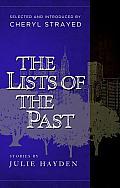 An office falls in love with their glamorous temp.
An office falls in love with their glamorous temp.
(from The Best American Nonrequired Reading 2009)
So, Karen, what’s your story, we asked.
It turned out the temp was writing a novel! It was going to be the Filipino version of One Hundred Years of Solitude. She was stuck on a particular chapter, and she was here, she said, to put her novel on the back burner of her mind and fill the front burner with easily accomplished tasks.
Well, we thought, that’s certainly unusual. We had never considered our tasks easy to accomplish. We had always found them virtually impossible to accomplish. But we nodded sagely, like we got it.
This story takes place over the course of one week and is divided into tiny chapters labeled Monday-Friday. It’s told from the perspective of all of the office workers, all of whom are women. With each passing day, the women become more and more obsessed with the temp, who is “slim and tanned–some kind of Asian.”
On Tuesday, the temp does their charts with a computer program and tells the women that they don’t belong there, that they are wasting their lives in a “watery office”: “‘Yes,’ we thought. This is just what we’d always suspected.”
At the end of the week, they don’t want to let Karen go. I won’t give away the ending but it’s good.
Having spent years in a “watery office,” I could relate to this story to an uncomfortable degree. It’s nearly perfect in its focus and scope. “The Temp” isn’t online but here is Amelia Kahaney’s website. Also, this edition of Best American Nonrequired Reading is excellent.









